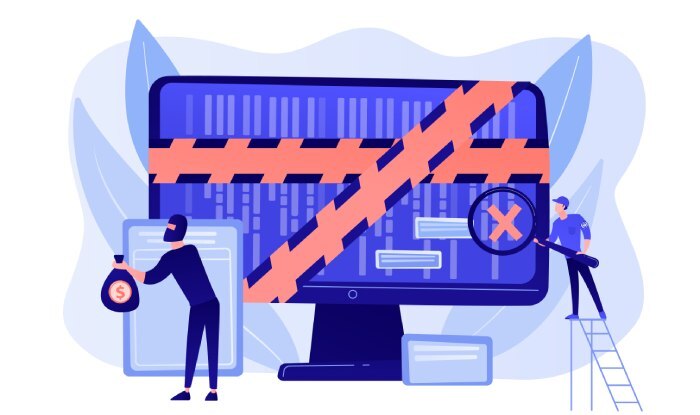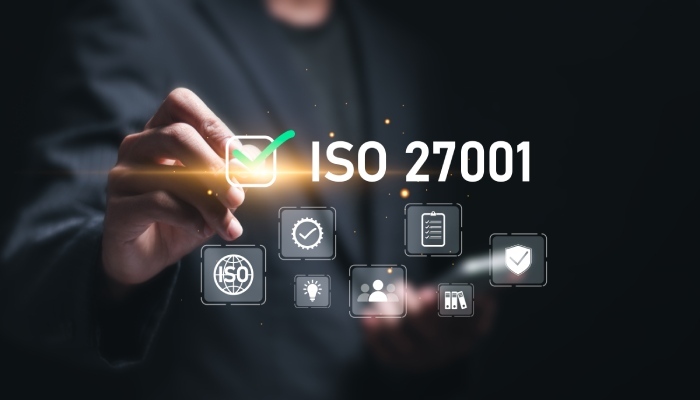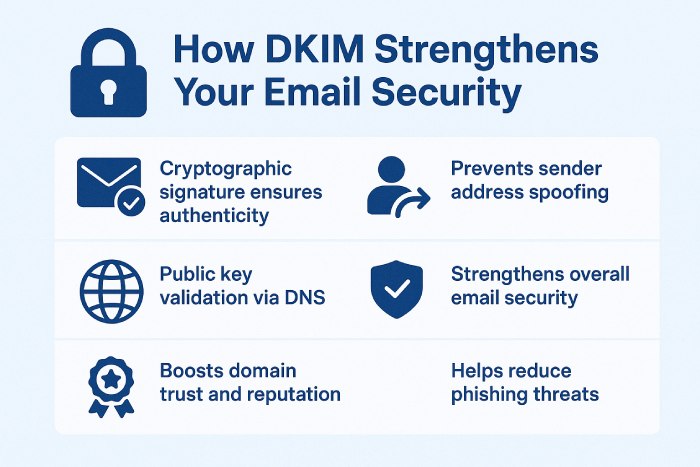How email authentication helps you prove sender identity under ISO 27001
Email is one of the main ways companies talk to customers, partners, and even their own teams. Because it is used so much, it also becomes an easy target for attackers who try to pretend to be someone else or steal important information. When a business wants to follow ISO 27001, it needs to show that its messages are safe and really coming from the right sender. That is where email authentication becomes helpful.
Email authentication tools verify if an email is actually from the sender it claims to be from. This helps prevent fake emails from tricking people into sharing information or sending money, supporting safer communication and ISO 27001’s goals.
This blog explains why sender identity matters for ISO 27001, how SPF, DKIM, and DMARC support compliance, and how to integrate these controls into your security framework in a practical, step-by-step way.
Understanding ISO 27001 and its relevance to email security
ISO 27001 is an international standard that helps organizations systematically manage information security. It defines how to identify, assess, and manage risks that could compromise the confidentiality, integrity, and availability of business information. The ultimate goal is to prevent breaches while also establishing security practices for continuous improvement.
You already know that email is one of the most common entry points for phishing, spoofing, BEC attacks, and data leakage. Even a single spoofed message can trigger financial losses or compliance violations if sensitive data is shared with unauthorized parties. When it comes to ISO compliance, organizations have to clearly show that they are capable of preventing and mitigating these risks through authenticated and verifiable communication channels, particularly those involving email security.
This is precisely where SPF, DKIM, and DMARC step in to help you prove the sender’s identity has not been forged. This aligns with the standard’s requirement to maintain authenticity and integrity across communication systems.
Why proving sender identity is essential for ISO 27001 compliance
It’s important to know that proving sender identity in your email setup is not just a technical step; it’s instead a compliance control that’s meant to establish authenticity while preventing breaches. Here’s how it ties into the framework in deeper technical terms:
Supports the core principle of information authenticity
ISO 27001 requires organizations to ensure the authenticity of information exchanged across communication systems. Email authentication fulfills this by verifying that messages genuinely originate from authorized domains.
Strengthens the evidence core during compliance
Auditors require you to provide clear evidence that your email channels are controlled and constantly monitored. With authentication protocols in place, verifiable data (such as DMARC reports) is automatically generated.
Prevents data leakage through untrusted channels
Unverified senders pose a serious risk of data leakage. Employees may unknowingly share confidential information with fraudulent addresses. Email authentication helps mitigate this risk by ensuring that all communications occur between verified, trusted domains.
Builds trust
When every email is verified, people know it’s really coming from your domain, not a fake one. That sense of consistency and security builds confidence among clients, partners, and even regulators. Over time, this reliability strengthens your reputation and supports ISO 27001’s goal of keeping communication transparent and well-controlled.
How SPF, DKIM, and DMARC strengthen ISO 27001 email controls?
The three email authentication protocols address different aspects of the identity and integrity issues that domain owners face. Here is how they help-
How does SPF support ISO 27001 controls
SPF helps ensure only authorized mail servers are used to send messages on behalf of your organization. Mail providers check the sender’s IP against the list of authorized IPs before delivering the message. If the IP is not listed, the message is either marked as spam or rejected, depending on what mechanism you have mentioned in your SPF record.
This reduces impersonation and helps meet requirements in Annex A.13 for protecting electronic communication from unauthorized use or manipulation.
How does DKIM support ISO 27001 controls
DKIM adds a cryptographically secured digital signature to each outgoing email, which receiving servers verify using a public key stored in DNS. If the signature fails to match, it’s considered an indication of tampering with the message while it was in transit.
This helps protect the integrity and authenticity of the message, satisfying ISO 27001’s requirement for safeguarding information from unauthorized changes in transit. DKIM is all the more valuable for emails involving confidential details, including medical reports, contracts, invoices, payment instructions, etc.
How does DMARC support ISO 27001 controls
DMARC works on the basis of SPF and DKIM results. If a message fails SPF and DKIM checks, DMARC instructs the receiving mailbox on what to do with it: either place it in the spam folder or deny it entry.
It also enables reporting, helping domain owners see authentication results and determine whether an unauthorized entity is trying to send emails on their behalf. DMARC reports also help them figure out misconfigurations in their SPF, DKIM, or DMARC records.
This way, DMARC supports ISO 27001’s need for controlled monitoring and evidence during audits.
Integrating email authentication into your ISO 27001 framework
Email authentication works efficiently when it’s planned, configured, and managed correctly. Below is a simple way to include SPF, DKIM, and DMARC in your existing security framework:
Step 1- Identify email domains
Start by listing every domain and subdomain that sends emails on behalf of your organization. Include internal systems, marketing platforms, customer support tools, and any third-party sending emails for you.
This step helps you understand where risks exist and which systems need authentication controls. It also supports ISO 27001 asset inventory and risk assessment activities.
Step 2- Configure SPF, DKIM, and DMARC
Once domains are identified, create SPF records that list authorized mail servers. Set up DKIM to attach a digital signature to outgoing messages. Then apply a DMARC policy to tell receiving mail servers how to treat messages that fail SPF or DKIM checks. These controls prevent spoofing and support ISO 27001 requirements for communication security.
Step 3- Gradually transition from monitoring to enforcement
When starting DMARC implementation, it’s recommended to set the monitoring policy (p=none). Then review the reports over the next few weeks to see if any service fails authentication. When everything works as expected and you gain confidence, move to a stricter policy, which is p=quarantine.
Then, stay on the quarantine policy for a few months, until you are sure that there are absolutely no instances of false positives. When this stage comes, move to the strictest policy, which is p=reject.
This step-by-step approach reduces disruptions while improving protection.
Step 4- Document and use reports for audit evidence
Document all configuration steps, responsible teams, and maintenance procedures. DMARC reports and SPF or DKIM validation logs can serve as evidence during ISO audits. These records show that email risks are monitored and reviewed. This supports the continuous improvement cycle and proves that authentication controls are working as intended.
How DuoCircle can help
We understand that managing email authentication protocols can be daunting. It requires technical expertise, and if you are struggling with that, please reach out to us. Our team of experts will take care of everything, right from identifying the sending sources to analyzing DMARC reports and doing reconfigurations.






